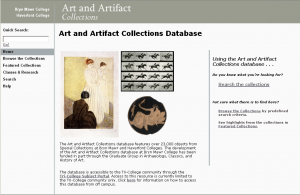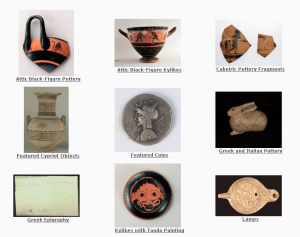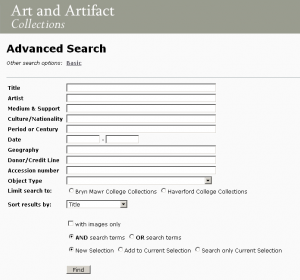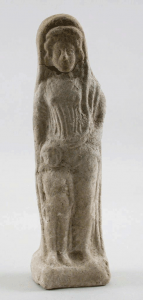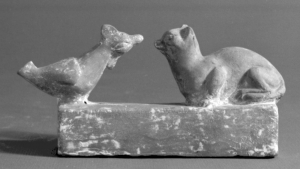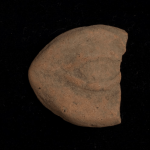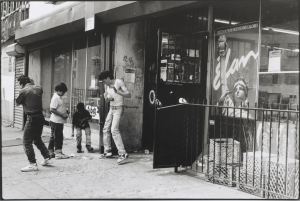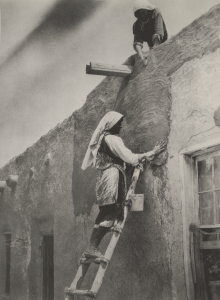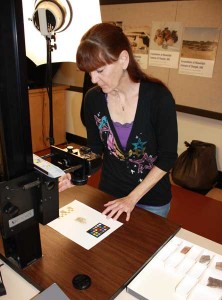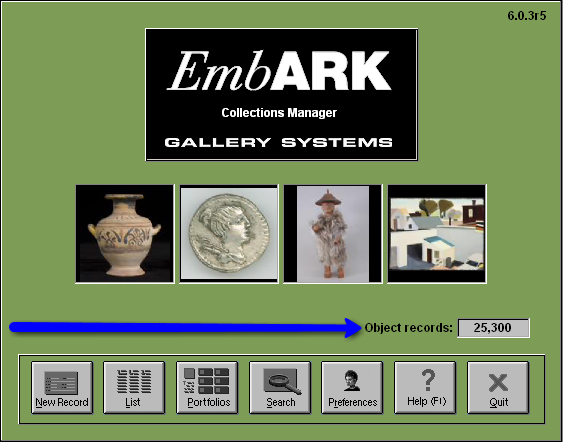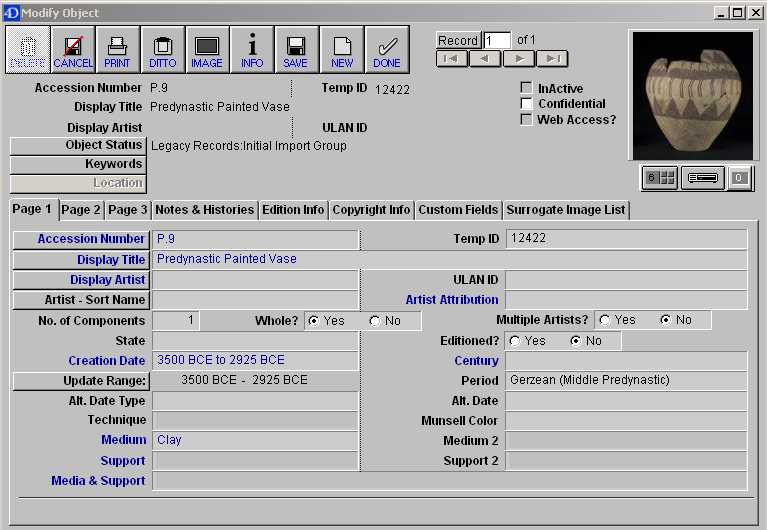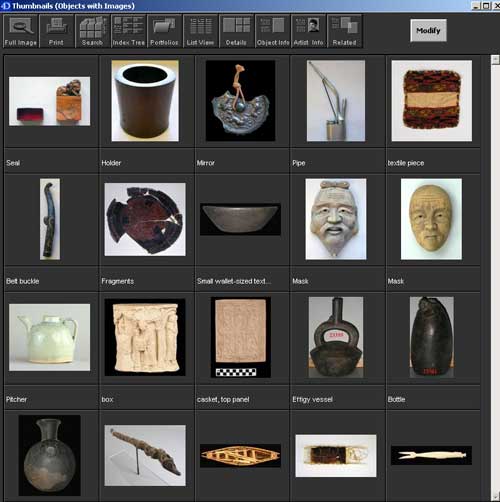Classics graduate student Diane Amoroso-O’Connor has been working for the past academic year as our Collections Information Management Intern. This position allowed her to experience all facets of working with collections information – from individual object cataloging to global data management in the new EmbARK database.
Of her work on the new Art and Artifact Collections database, Diane writes:
As the Collections Information Management Intern, I split my time between small-scale research projects, in which I research items from our collection that need a little more information, and large-scale data projects, in which I might edit a few thousand records at a time. Fortunately, the same general principles of data organization apply to both; the smaller projects provide practice for the larger data concerns, and the larger projects provide the global view of the collections that informs good object entries.
My first task in Collections was to accession a group of nine coins, and then to edit or add to all of our other coin entries, aiming for consistency and clarity. In order to identify the coins, I used the standard sources as references in the Collections (The Roman Imperial Coinage, etc.) but also tested out a variety of online sources, both academic and commercial. This gave me a look at the ways sites organized information and created something word-searchable out of graphic or image-based data. After entering the new data, I worked on the old data, editing for uniformity across the collection and (hopefully!) reducing ambiguities in titles or descriptions, such as whether a “Roman Coin” was issued in the Roman period, issued by the Roman government, or issued in Rome.

From left to right: Classical Didrachm of Elea (C.17), Classical Tetradrachm of Athens (C.96), and Hellenistic Slater of Itanus (C.112)
These sorts of changes were needed throughout the database, so I’ve gone through fictile ivories, geological photographs, anthropological artifacts, and all sorts of objects to make sure that data like dates or geographic origins of items are presented consistently across the database. Taking the objects in groups of thousands actually helps here; I can easily insure that I’m using the same terms or formatting throughout a type of item, then several types of items, building up to the database level.
Among the clean-up tasks, I’ve been able to intersperse research on our Egyptian Collections. Some of my favorite items in the College Collections are our pieces of Egyptian Predynastic pottery, donated by the American Exploration Society. In addition to checking the database entries against the two sets of cards for the objects, and updating some of the terminology used in the database, I had the opportunity to photograph these items (using a camera far better than any I could be trusted to own). Filling in lost data on our ushabtis has been my other pet project. I used Schneider’s typology to date our ushabtis, what I liked to call the “Hair and Handbag System,” as wigs and bags molded, carved, or painted on the figurines provided some of the most useful diagnostic data. This also allowed me to use Schneider’s terminology to make our descriptions uniform and easily referenced in Schneider’s work for anyone researching these objects in the future.
(If you don’t see an image below, it means that you will need to download the Quicktime plugin for your web browser).
Above: Egyptian Faience Ushabti (Funerary Sculpture) [F.164]
Of late, my large projects have moved from the editing and reformatting of data to the classification of objects. We’re working with a few different hierarchical systems that should allow users to browse the Collections. I’ve been classifying the types of objects by using The Revised Nomenclature for Museum Cataloging: A Revised and Expanded Version of Robert G. Chenhall’s System for Classifying Man-Made Objects, as well adding keywords to use a hierarchical system based on materials, time periods, subjects, and other features, grounded in The Getty’s Art and Architecture Thesaurus. While neither system captures every object or subject perfectly, either one provides a powerful search tool for anyone doing research on the collection, even before making any modifications or additions to the systems. (As a related note, if anyone has ever wanted to research numismatic depictions of helmets, it would be a very fruitful keyword search at the moment.)
Throughout this year, I’ve been amazed to see what the Collections database has become, and the research that other students have already put into action. Most of all, I’ve been fortunate to help make Collections a better tool for research and teaching, as well as work with, and learn from, Cheryl, Marianne, and Emily.

